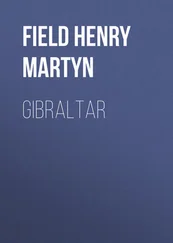Henry Field - From Egypt to Japan
Здесь есть возможность читать онлайн «Henry Field - From Egypt to Japan» — ознакомительный отрывок электронной книги совершенно бесплатно, а после прочтения отрывка купить полную версию. В некоторых случаях можно слушать аудио, скачать через торрент в формате fb2 и присутствует краткое содержание. Жанр: foreign_antique, foreign_prose, Путешествия и география, на английском языке. Описание произведения, (предисловие) а так же отзывы посетителей доступны на портале библиотеки ЛибКат.
- Название:From Egypt to Japan
- Автор:
- Жанр:
- Год:неизвестен
- ISBN:нет данных
- Рейтинг книги:3 / 5. Голосов: 1
-
Избранное:Добавить в избранное
- Отзывы:
-
Ваша оценка:
- 60
- 1
- 2
- 3
- 4
- 5
From Egypt to Japan: краткое содержание, описание и аннотация
Предлагаем к чтению аннотацию, описание, краткое содержание или предисловие (зависит от того, что написал сам автор книги «From Egypt to Japan»). Если вы не нашли необходимую информацию о книге — напишите в комментариях, мы постараемся отыскать её.
From Egypt to Japan — читать онлайн ознакомительный отрывок
Ниже представлен текст книги, разбитый по страницам. Система сохранения места последней прочитанной страницы, позволяет с удобством читать онлайн бесплатно книгу «From Egypt to Japan», без необходимости каждый раз заново искать на чём Вы остановились. Поставьте закладку, и сможете в любой момент перейти на страницу, на которой закончили чтение.
Интервал:
Закладка:
We visited the Great Pyramid again on our return from Upper Egypt, and explored the interior, but reserve the description to another chapter.
CHAPTER II
At last we are on the Nile, floating as in a dream, in the finest climate in the world, amid the monuments and memories of thousands of years. Anything more delightful than this climate for winter cannot be imagined. The weather is always the same. The sky is always blue, and we are bathed in a soft, delicious atmosphere. In short, we seem to have come, like the Lotus-eaters, to "a land where it is always afternoon." In such an air and such a mood, we left Cairo to make the voyage to which we had been looking forward as an event in our lives.
To travellers who desire to visit Egypt, and to see its principal monuments, without taking more time than they have at command, it is a great advantage that there is now a line of steamers on the Nile. The boats belong to the Khedive, but are managed by Cook & Son, of London, the well-known conductors of excursions in Europe and the East. They leave Cairo every fortnight, and make the trip to the First Cataract and back in twenty days, thus comprising the chief objects of interest within a limited time. Formerly there was no way to go up the Nile except by chartering a boat, with a captain and crew for the voyage. This mode of travel had many charms. The kind of boat – called a dahabeeah – was well fitted for the purpose, with a cabin large enough for a single family, or a very small party, and an upper deck covered with awnings; and as it spread its three-cornered lateen sail to the wind, it presented a pretty and picturesque object, and the traveller floated along at his own sweet will. This had only the drawback of taking a whole winter. But to leisurely tourists, who like to do everything thoroughly, and so take but one country in a year; or learned Egyptologists, who wish, in the intervals of seeing monuments, to make a special study of the history of Egypt; or invalids, who desire only to escape the damps and fogs of Britain, or the bitter cold of the Northern States of America – nothing can be imagined more delightful. There is a class of overworked men for whom no medicine could be prescribed more effectual than a winter idled away in this soothing, blissful rest. Nowhere in the world can one obtain more of the dolce far niente , than thus floating slowly and dreamily on the Nile. But for those of us who are wandering over all the earth, crossing all the lands and seas in the round world, this slow voyaging will not answer.
Nor is it necessary. One can see Egypt – not of course minutely, but sufficiently to get a general impression of the country – in a much less time. It must be remembered that this is not like other countries which lie four-square, presenting an almost equal length and breadth, but in shape is a mere line upon the map, being a hundred times as long as it is broad. To be exact, Egypt from the apex of the Delta – that is from Cairo – to the First Cataract, nearly six hundred miles, is all enclosed in a valley, which, on an average, is only six miles wide, the whole of which may be seen from the deck of a steamer, while excursions are made from day to day to the temples and ruins. It is a mistake to suppose that one sees more of these ruins on a boat because he is so much longer about it, when the extra time consumed is not spent at Denderah or Thebes, but floating lazily along with a light wind, or if the wind be adverse, tied up to a bank to await a change. In a steamer the whole excursion is well divided, ample time being allowed to visit every point of interest, as at Thebes, where the boat stops three days. As soon as one point is done, it moves on to another. In this way no time is lost, and one can see as much in three weeks as in a dahabeeah in three months.
Our boat carried twenty-seven passengers, of whom more than half were Americans, forming a most agreeable company. All on deck, we watched with interest the receding shores, as we sailed past the island of Rhoda, where, according to tradition, the infant Moses was found in the bulrushes; and where the Nilometer, a pillar planted in the water ages ago, still marks the annual risings and fallings of the great river of Egypt. The Pyramids stood out clear against the western sky. That evening we enjoyed the first of a series of glorious sunsets on the Nile. Our first sail was very short – only to Sakkara, a few miles above Cairo, where we lay to for the night, the boat being tied up to the bank, in the style of a steamer on the Mississippi.
Early the next morning our whole company hastened ashore, where a large array of donkeys was waiting to receive us. These had been sent up from Cairo the night before. My faithful attendant was there with "Yankee Doodle," and claimed me as his special charge. We were soon mounted and pricking over what we should call "bottom lands" in the valleys of our Western rivers, the wide plain being relieved only by the palm groves, and rode through an Arab village, where we were pursued by a rabble rout of ragged children. The dogs barked, the donkeys brayed, and the children ran. Followed by such a retinue, we approached the Pyramids of Sakkara, which stand on the same plateau as those of Ghizeh, and are supposed to be even older in date. Though none of them are equal to the Great Pyramid, they belong to the same order of Cyclopean architecture, and are the mighty monuments of an age when there were giants in the earth.
There is a greater wonder still in the Tombs of the Sacred Bulls, which were long buried beneath the sands of the desert, but have been brought to light by a modern explorer, but which I will not describe here, as I shall speak of them again in illustration of the religious ideas of the Egyptians.
Near the Pyramids of Sakkara is the site of Memphis, the capital of ancient Egypt, of whose magnificence we have the most authentic historic accounts, but of which hardly a trace remains. We galloped our donkeys a long distance that we might pass over the spot where it stood, but found only great mounds of earth, with here and there a few scattered blocks of granite, turned up from the soil, to tell of the massive structures that are buried beneath. The chief relic of its former glory is a statue of Rameses the Great, one of the most famous of the long line of the Pharaohs – a statue which was grand enough to be worthy of a god – being some fifty feet high, but which now lies stretched upon the earth, with its face downward, all its fine proportions completely buried in a little pond – or rather puddle – of dirty water! At certain seasons of the year, when the Nile subsides, the features are exposed, and one may look upon a countenance "whose bend once did awe the world;" but at present, seeing only the back, and that broken, it has no appearance or shape of anything, and might be a king, or queen, or crocodile. What a bitter satire is it on all human pride, that this mighty king and conqueror, the Napoleon of his day – who made nations tremble – now lies prone on the earth, his imperial front buried in the slime and ooze of the Nile! That solitary stone is all that is left of a city of temples and palaces, which are here entombed, and where now groves of palms wave their tasselled plumes, like weeping willows over the sepulchre of departed greatness.
Our next excursion was to the remains of a very remote antiquity on the other side of the Nile – the Rock-Tombs of Beni-Hassan – immense caverns cut in the side of a mountain, in which were buried the great ones of Egypt four thousand years ago. Many of them are inscribed with hieroglyphics, and decorated with frescoes and bas-reliefs, in which we recognize not only the appearance of the ancient Egyptians, but even of the animals which were familiar in that day, such as the lion, the jackal, and the gazelle, and more frequently the beasts of burden – bulls and donkeys; but in none do we discover the horse, nor, what is perhaps even more remarkable in a country surrounded by deserts – the camel.
Читать дальшеИнтервал:
Закладка:
Похожие книги на «From Egypt to Japan»
Представляем Вашему вниманию похожие книги на «From Egypt to Japan» списком для выбора. Мы отобрали схожую по названию и смыслу литературу в надежде предоставить читателям больше вариантов отыскать новые, интересные, ещё непрочитанные произведения.
Обсуждение, отзывы о книге «From Egypt to Japan» и просто собственные мнения читателей. Оставьте ваши комментарии, напишите, что Вы думаете о произведении, его смысле или главных героях. Укажите что конкретно понравилось, а что нет, и почему Вы так считаете.












